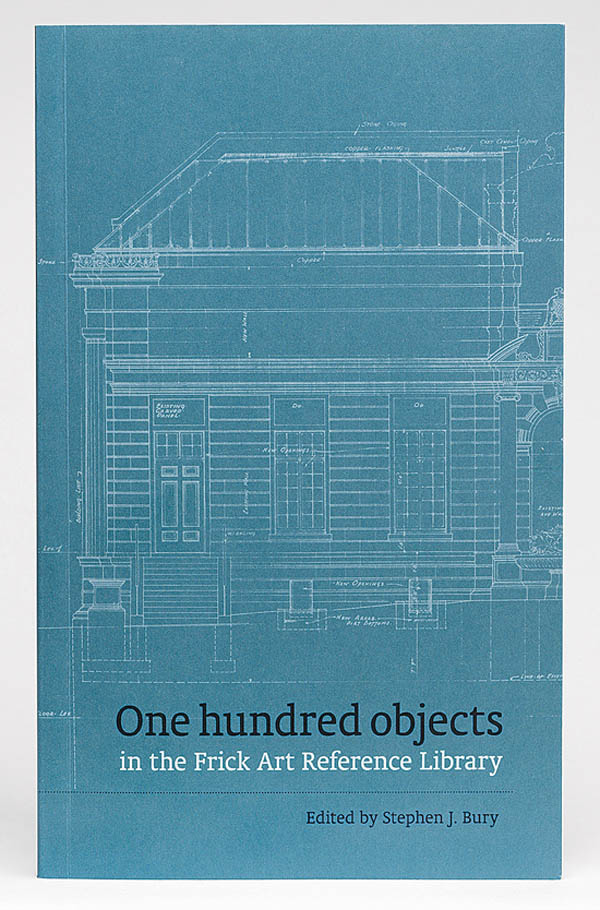Frick Art Reference Library Celebrates Centennial
New Anthology Documents Library's Remarkable History through Collection Highlights
With entries written by current and past staff members, the publication underscores the breadth of the librarys holdings, enjoyed by generations of students, scholars, and members of the public at no charge. Over the next two years, the celebration continues with One Hundred Years at the Library, a series of related videos released on the Fricks YouTube channel, and dedicated blog posts published on www.frick.org/blogs.
There are so many ways to tell the story of this significant library, from reflections on its founder and the staff who shaped it to the collections in its care and the cutting-edge offerings for which it is known today. We hope this volume offers fresh and perhaps unexpected perspectives on the evolution of what is today one of the worlds leading research centers, comments Stephen J. Bury, the Andrew W. Mellon chief librarian.
The publication marks the anniversary of the library opening its doors to the public for the first time, in 1922, after its founding by Helen Clay Frick as a memorial to her father, Henry Clay Frick. The basis of its collections were data and documents she provided to him while conducting research on the artists in his collection. She drew inspiration from the Witt Library of Reproductions, established in London in the late 19th century by connoisseurs Mary and Sir Robert Witt, who was a trustee of both the National Gallery and Tate and chairman of the National Loan Collections Trust. Helen Fricks library, whose founding collection, the Photoarchive, was the first of its kind in the United States, was initially housed in the basement bowling alley of the family residence. In early 1922, an art history class from Princeton University was the first group of researchers to visit the newly founded Frick Art Reference Library, and this event was chosen to mark the centennial, as it affirmed the nascent institution as a serious destination for the study of art history.
In 1935, the library opened a new permanent home, located at 10 E. 71st St. in Manhattan. The building was designed by John Russell Pope, who at the same time was transforming the Frick residence into the museum now known as The Frick Collection. Together, these two public institutions, today joined as one, would become seminal centers dedicated to the appreciation and study of art. Over the next century, the library evolved and expanded its offerings, notably embracing innovation and new technologies to broaden scholars access to a vast array of art historical resources. This includes the advancements of its Photoarchive and initiatives in microfilming, digitization, web archiving, computer vision, and much more. An example discussed in the book is a newly developed software tool called ARIES (ARt Image Exploration Space), developed in collaboration with NYUs Tandon School of Engineering and Brazils Universidade Federal Fluminense, which allows researchers and art historians to manipulate and organize images in a digital space in a way that promotes new findings and greatly assists in scholarly work.
One Hundred Objects in the Frick Art Reference Library was supported by the Eugene V. and Clare E. Thaw Charitable Trust. Published by the Frick Art Reference Library in association with Uniformbooks, it is available for purchase in the museum shop at Frick Madison or at www.shop.frick.org.






